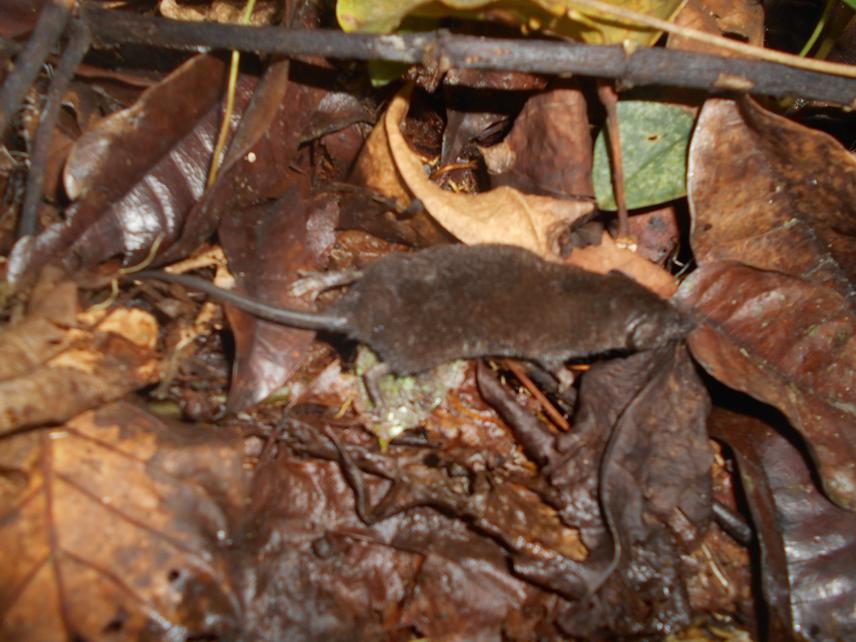Ahissa Laurent
Other projects
21 Mar 2018
Diversity, Abundance and Conservation of Small Mammals in Tanoe-Ehy Swampy Forest Reserve, High Conservation Value Site in Côte d’Ivoire
Banco National Park (PNB) is today the only natural site that shelters the critically endangered Wimmer shrew. This species has disappeared from the Adiopodoumé forest, identified as its type locality. The reasons for its disappearance are deforestation, establishment of crops and accelerated urbanization. Although this species is threatened, it does not benefit from direct conservation measures. Our study proposes to study its distribution and its abundance in the PNB. It is therefore urgent to do this study, it will allow us to have a reliable database on this species in order to develop an effective program for its conservation.

Wimmer shrew.
Background:
The Wimmer shrew (Crocidura wimmeri) classified as critically endangered by the International Union for the Conservation of Nature (IUCN) is a mammal’s species endemic to Côte d'Ivoire. It was first described by Heim de Balsac and Aellen in 1958 in the peri-urban forest of Adiopodoume considered to be the type locality of this species in Côte d'Ivoire.
Since then, several anthropogenic disturbances such as the felling of trees for commercial purposes, land clearing for agriculture, uncontrolled urbanization have been the main causes of the degradation of the type locality of this species and therefore of the disappearance of certain components of biodiversity found there. This shrew has not been observed since 1976 and therefore declared extinct (Fisher & Blomberg, 2012). Investigations were carried out in all forests of the city of Abidjan (Adiopodoumé forest, Banco National Park (BNP)) in order to confirm the extinct status of this shrew (Kadjo et al. 2013; Vogel et al. 2014).
Main objectives:
1- Determine the abundance of Wimmer’s shrew in the Banco National Park (BNP).
2- Determine the distribution of Wimmer’s shrew in the BNP
3- Assess the threats to the species
4- Carry out some conservation actions for the safeguard of the Wimmer's shrew
Methods:
-Wimmer shrew sampling
Sampling will be done using the trapping method with pitfall (buried pots). This method is very effective for capturing shrews (Nicolas, 2009; Akpatou et al. 2018). Sampling will be done in the dry season and in the rainy season. At each trapping session, six plots will be sampled. The trap visits will be made every morning around 9 a.m. for seven consecutive days.
-Threat assessment
The observation of threats will be carried out using the recce method (reconnaissance survey) (Maréchal and Bastin, 2008) through the different types of habitats in the park. The recce consists in making the observations while moving on paths of least resistance. According to Mathot and Doucet (2006), it is indeed a simple, efficient and economical procedure.
-Environmental education
One application of environmental education at school level is children's literature, which is an essential tool for educating children in sustainable development.
Expected results:
-The abundance and distribution of C. wimmeri will be known in the BNP.
-The typology and assessment of the threats to the species are finally known.
-Five pilot schools around the BNP will be instructed on environmental education.